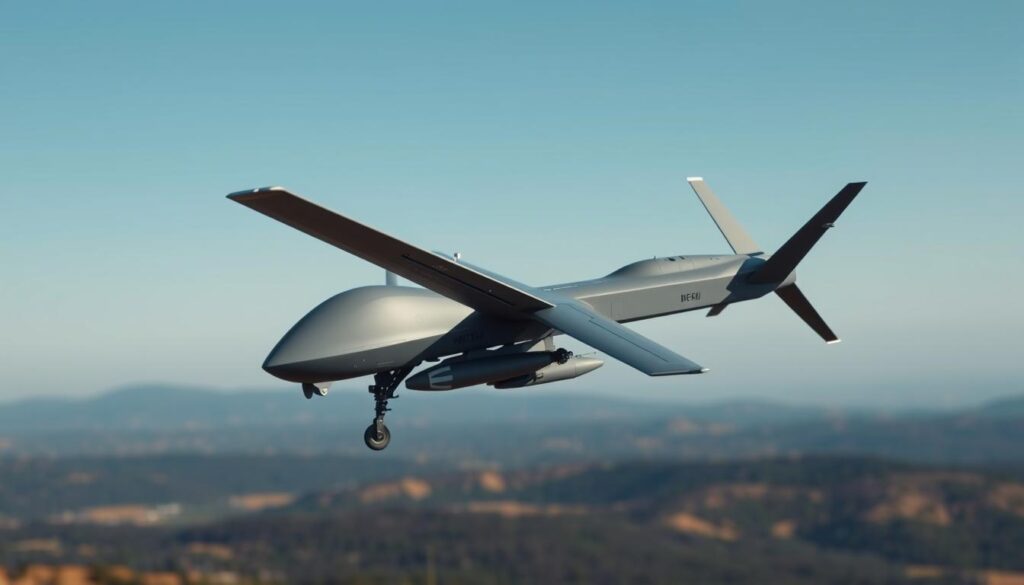What happens when the same technology designed to advance society becomes its greatest threat? This question lies at the heart of modern debates about artificial intelligence’s rapid evolution. Once hailed as a revolutionary force for progress, advanced machine learning systems now present alarming security risks capable of undermining democracies and reshaping global power dynamics.
Today’s technological landscape operates on a dangerous duality. While innovations promise economic growth and scientific breakthroughs, their misuse threatens critical infrastructure, electoral systems, and public trust. Current regulatory frameworks—built for slower, analog-era threats—struggle to contain attacks powered by adaptive algorithms that evolve faster than human oversight can respond.
The military sector exemplifies this tension. Autonomous systems now execute missions at speeds exceeding human decision-making capacities, creating new ethical challenges for warfare protocols. Meanwhile, commercial developers face mounting pressure to balance profit motives with safeguards against malicious applications.
Accessibility compounds these issues. Cloud-based tools and open-source libraries have democratized capabilities once restricted to nation-states, enabling smaller groups to launch sophisticated cyber campaigns. This shift demands urgent collaboration between policymakers, technologists, and security experts to establish boundaries for responsible innovation.
Key Takeaways
- Modern technology serves dual purposes—advancing society while creating new vulnerabilities
- Existing regulations cannot address evolving algorithmic threats effectively
- Military applications redefine conflict dynamics through machine-speed operations
- Tech companies must reconcile innovation with ethical safeguards
- Accessible tools enable widespread misuse by state and non-state actors
- Comprehensive analysis of technical and social factors is critical for solutions
Understanding AI Weaponization: Ethical and Technological Challenges

Global security frameworks face unprecedented tests from machine-driven combat tools. Modern defense strategies increasingly rely on algorithmic systems that analyze data faster than human operators, creating both strategic advantages and systemic vulnerabilities. These technologies enable precise threat detection but also empower malicious actors to launch hyper-targeted disinformation campaigns.
The Dual-Edged Nature of Technological Warfare
Military applications demonstrate how machine learning serves conflicting purposes. Autonomous drones can evacuate civilians from war zones while identical platforms conduct surveillance for precision strikes. This dichotomy complicates international agreements on ethical combat standards.
| Application Type | Defensive Use | Offensive Risk |
|---|---|---|
| Cyber Defense | Real-time threat neutralization | Infrastructure sabotage |
| Disinformation Monitoring | Election protection | Fabricated media campaigns |
| Combat Systems | Collateral damage reduction | Autonomous targeting errors |
Institutional Vulnerabilities in the Digital Age
Democratic processes now confront manipulated audio recordings that imitate officials’ voices. A fabricated statement from a world leader could trigger diplomatic conflicts within hours. Verification mechanisms struggle against synthetic media generated by open-source tools available to adversarial nations and fringe groups.
Critical infrastructure faces similar risks. Power grids and communication systems using smart sensors become entry points for coordinated attacks. As seen in debates about AI in education, the same algorithms that personalize learning can also profile populations for psychological operations.
The Evolution of Artificial Intelligence in Military Systems

Military strategies have shifted dramatically since the early 2000s, when basic decision-support tools first aided battlefield planning. Today’s weapons systems operate with autonomy once confined to science fiction, triggering global debates about algorithmic control over life-and-death decisions.
From Decision-Making Tools to Autonomous Combat
Early military applications focused on data analysis for logistics and risk assessment. By 2012, the U.S. Department of Defense formalized policies for autonomous weapons, sparking international scrutiny. Systems like Israel’s Iron Dome now intercept threats faster than human operators can react—a necessity in modern warfare.
Current technologies enable drones to identify targets using facial recognition and terrain mapping. Swedish LEDS-150 vehicles autonomously detect incoming missiles, while German MANTIS systems defend airspace without manual input. These advancements stem from decades of research development in machine learning and sensor integration.
Milestones in AI Development and Weapon Systems
The timeline below highlights critical advancements:
| Year | Development | Impact |
|---|---|---|
| 2012 | U.S. autonomy framework | Policy standards for algorithmic combat |
| 2017 | Tech leaders’ UN appeal | Global awareness of arms race risks |
| 2019 | Drone proliferation forecasts | 80,000+ surveillance drones projected by 2030 |
Defensive systems now evolve through battlefield data, improving accuracy with each engagement. Swarm intelligence research enables coordinated drone attacks, challenging traditional warfare tactics. As autonomous platforms dominate procurement budgets, ethical concerns grow alongside their capabilities.
AI Weaponization: Ethical Dilemmas and the Human Factor
When lethal decisions shift from soldiers to algorithms, society confronts unprecedented moral questions. Autonomous weapons systems challenge foundational principles of warfare by removing direct human oversight from critical combat operations. A recent UN report states: “Machines lack the contextual understanding required to apply ethical reasoning in dynamic conflict zones.”
Accountability in Algorithmic Combat
Current international law mandates that weapon systems distinguish combatants from civilians—a task requiring nuanced judgment. While advanced tools improve target identification accuracy, they struggle with complex scenarios like urban battles where combatants blend with non-combatants. Who bears responsibility when autonomous platforms misidentify targets?
The accountability gap widens when systems operate without human intervention. Military commanders face legal limbo if algorithms independently cause civilian casualties. This dilemma intensifies debates about maintaining human control through hybrid decision-making frameworks that blend machine speed with ethical oversight.
Global efforts to regulate these technologies remain fragmented. While 42 nations support a ban on fully autonomous weapons, major military powers continue developing systems capable of independent target engagement. This tension between strategic advantage and humanitarian concerns defines modern warfare’s ethical frontier.
Industry Impact: Innovations, Risks, and Economic Implications
Global tech investment patterns reveal a stark imbalance between advancing capabilities and addressing vulnerabilities. While nations race to dominate emerging fields, less than 12% of artificial intelligence funding targets security measures like deepfake detection or algorithmic accountability systems.
Financial commitments highlight this disparity. China’s $150 billion push for technological leadership dwarfs U.S. investments, while Saudi Arabia’s planned $40 billion fund could reshape global innovation hierarchies. These allocations prioritize offensive applications over defensive research, creating systemic weaknesses in critical infrastructure.
Strategic Investments and Security Gaps
The table below illustrates how national priorities influence development trajectories:
| Country | Investment (USD) | Primary Focus |
|---|---|---|
| China | $150 billion | Autonomous systems, surveillance tech |
| United States | $4.6 billion | Military applications, cybersecurity |
| Saudi Arabia | $40 billion | AI infrastructure, smart cities |
Commercial enterprises face dual pressures. Rapid innovation cycles clash with ethical responsibilities as civilian technologies repurposed for military use create legal gray areas. A recent industry report notes: “Companies developing facial recognition tools now face lawsuits when governments weaponize their products.”
Economic consequences extend beyond direct spending. Cybersecurity upgrades and compliance costs strain corporate budgets, while strategic planning requires balancing competitive advantages against global stability concerns. Sustainable progress demands redirecting resources toward safety frameworks without stifling legitimate innovation.
Global Regulatory and Governance Frameworks
Global coordination struggles to keep pace with evolving security threats. Current efforts to establish international standards face roadblocks, as seen in the May 2023 UN Convention on Conventional Weapons meeting. Despite 52 nations endorsing minimum safeguards, participants failed to create binding frameworks for autonomous systems.
International Standards and Coordination Challenges
The absence of unified regulations enables inconsistent approaches across countries. While some nations prioritize ethical principles in military tech, others exploit gaps for strategic advantages. This fragmentation mirrors challenges seen in financial technology governance, where rapid innovation outpaces oversight mechanisms.
The Role of Institutions and National Policies
The United Nations remains central to discussions but lacks enforcement power. Proposed models like the Financial Action Task Force framework could mandate baseline safety standards. However, conflicting national policies complicate implementation—some governments prioritize innovation, while others demand strict compliance protocols.
Without cohesive international law, systemic vulnerabilities persist. Effective solutions require balancing innovation incentives with security imperatives, ensuring technological progress aligns with global stability goals.







